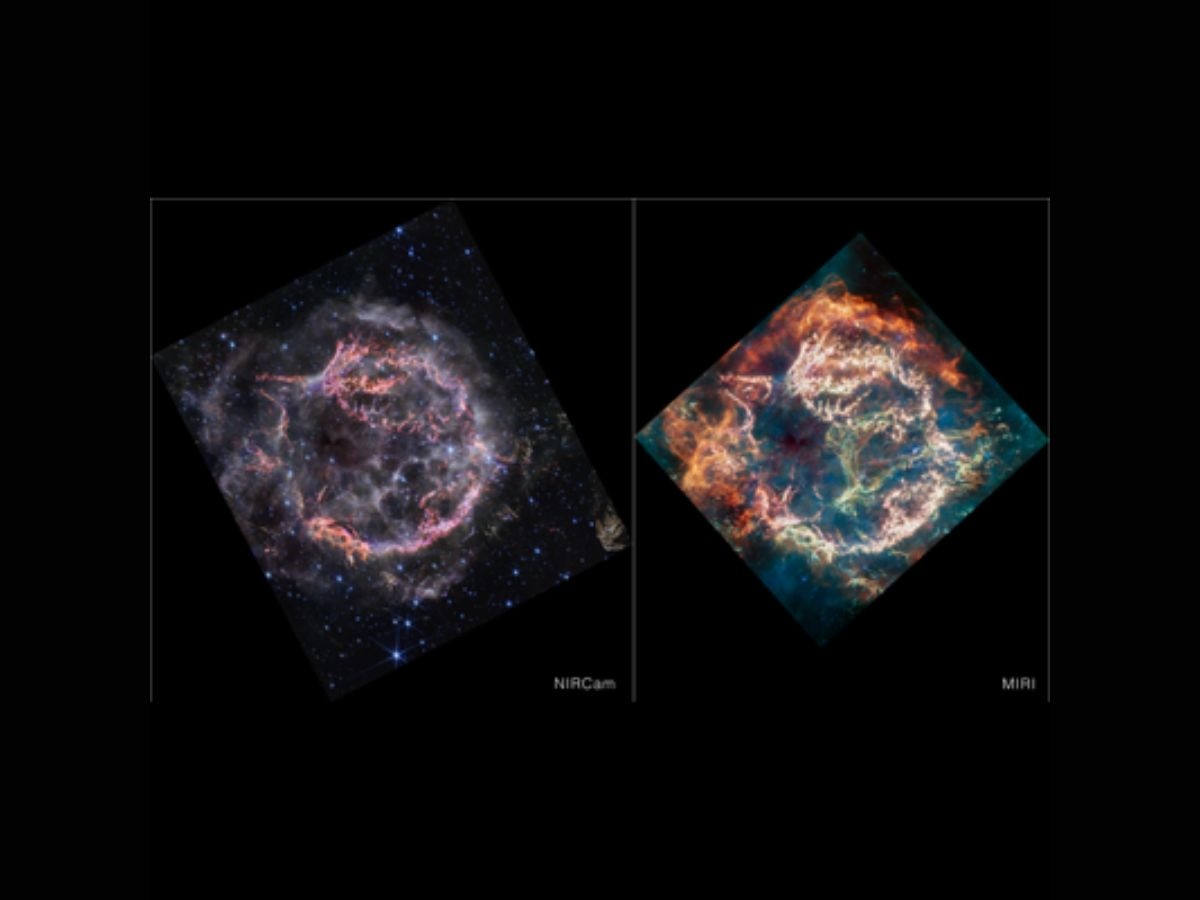XPoSAT: XSPECT Payload Of India’s First Black Hole Mission Captures Light From Cassiopeia A
[ad_1]
XPoSAT, India’s first mission to study black holes and neutron stars, has captured light from the Cassiopeia A (Cas A) supernova remnant. Short for X-ray Polarimeter Satellite, XPoSAT is India’s first dedicated polarimetry mission to study the dynamics of bright astronomical X-ray sources in extreme conditions, which means the spacecraft will analyse X-rays emitted by celestial bodies such as black holes, neutron stars, active galactic nuclei, and pulsar wind nebulae by measuring the beams of light in which the vibrations of electromagnetic waves are confined to one plane.
The Indian Space Research Organisation (ISRO) launched XPoSAT on January 1, 2024, atop a Polar Satellite Launch Vehicle (PSLV), from Satish Dhawan Space Centre, Sriharikota, Andhra Pradesh.
Two scientific payloads onboard the satellite launched on 2024 New Year’s Day will study interesting celestial objects, and unravel the mysteries of cosmic X-ray sources. These payloads are: Polarimeter Instrument in X-rays (POLIX), and X-ray Spectroscopy and Timing (XSPECT).
UR Rao Satellite Centre’s (URSC’s) Space Astronomy Group has developed XSPECT. This payload has captured its first light from Cassiopeia A. The aim of XSPECT is to analyse spectroscopic information of soft X-rays, or photons of astronomical origin in the energy range of 0.8 to 15 kiloelectron volts.
ALSO READ | XPoSAT: How ISRO’s Black Hole Mission Will Script A ‘POEM’ In Space, And Why It Is Special
This means that XSPECT will obtain information related to the absorption and emission of radiation by astronomical objects.
The payload will perform continuous and long-term spectral and temporal (relating to time) studies of soft X-rays, which have less energy compared to hard X-rays.
XSPECT will observe X-ray pulsars, which are rotating neutron stars; black hole binaries, in which two black holes orbit each other; and magnetars, which are exotic neutron stars with extremely powerful magnetic fields.
According to ISRO, XSPECT was directed towards Cassiopeia A during the payload’s performance verification phase. Cassiopeia A is a standard celestial source used for instrument evaluation.

XSPECT started observing Cassiopeia A on January 5, 2024, and captured the supernova remnant’s emission lines corresponding to magnesium, silicon, sulphur, argon, calcium, and iron. This means that the payload captured the spectrum of soft X-rays emitted by these elements.
XSPECT’s observations will help scientists understand the high-energy phenomena occurring in the universe.
ALSO READ | What Is XPoSAT? First-Of-Its-Kind ISRO Mission That Will Study Black Holes, Neutron Stars And More
More about Cassiopeia A

Cassiopeia A, which is a part of the Milky Way galaxy, is one of the most popular astronomical objects. Recently, NASA’s James Webb Space Telescope observed Cassiopeia A in near-infrared light.
NASA compares the Cassiopeia A supernova remnant to a shiny ornament ready to be placed in the perfect spot on a holiday tree.
Webb’s NIRCam (Near-Infrared Camera) captured a spectacular image of Cassiopeia A. The image shows the stellar explosion at a resolution that was previously unreachable at wavelengths other than near-infrared and infrared.
The expanding shell of material can be seen becoming a part of the gas shed by the star before it exploded.
Webb’s Mid-Infrared Instrument (MIRI) has revealed new, exciting, and unexpected features within the inner shell of the Cassiopeia A supernova remnant.
Since infrared light is invisible to human eyes, scientists translated these wavelengths into visible colours.
The bright orange and light pink colours represent the inner shell of the supernova remnant. The surrounding gas consists of sulphur oxygen, argon, neon, dust, and other molecules, all of which will together form new stars and planetary systems in the future.
The white colour of Cassiopeia A is due to synchrotron radiation, which refers to the electromagnetic radiation emitted by charged particles travelling in curved paths around magnetic field lines.
There is a loop of green light in the central cavity of Cassiopeia A. This glows in the mid-infrared image, and has been nicknamed the Green Monster by the Webb research team.
The white and purple hues represent ionised gas, created due to the supernova debris pushing through and sculpting gas left behind by the star before its explosion.
ALSO READ | Science For Everyone: How Will Aditya-L1 Overcome Future Challenges? Know What A Former ISRO Scientist Says
[ad_2]
Source link